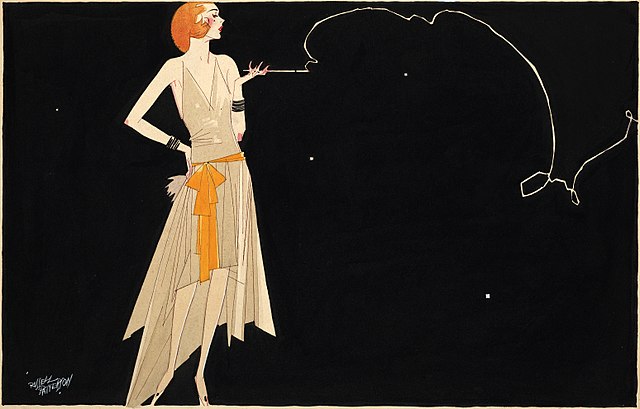I also want to present this study from 1993, as an example against the patriarchal-modesty culture which seeks to make women be sedentary. It's a study from a long time ago, so the issue between Britain and Finland that existed then, no longer applies now, but it shows a demonstration of the truth of the fitness concept. See here:
Women, Paid Employment and Ill-Health in Britain and Finland, Acta Sociologica, Vol. 36, No. 2 (1993), pp. 121, Sara Arber and Eero Lahelma wrote:The paper seeks to disentangle how similarities and differences between women's employment position in Britain and Finland are associated with inequalities in women's ill-health, using national surveys from 1986. In Finland, women participate fully in paid work, whereas British women are more likely to be full-time housewives or part-time employees. Unlike Finland, public provisions do not support the economic independence of British women. The degree of inequality in ill-health is greater among employed women in Finland than in Britain. Major differences between the two countries are the poor health of British housewives, and the impact of housing tenure and family roles on women's ill-health in Britain but not Finland. Previously married women who are not in paid employment in Britain have particularly poor health. Our findings suggest that in a society such as Britain where paid employment is not universal for women, women's family roles and housing quality affect their health, but this is not the case in Finland where women's participation in the labour market is near universal.
Women, Paid Employment and Ill-Health in Britain and Finland, Acta Sociologica, Vol. 36, No. 2 (1993), pp. 125, Sara Arber and Eero Lahelma wrote:Britain has relatively poor statutory maternity leave and pay provision compared with other European countries. Most women have the right to return full time (not part time) to their former employment within 29 weeks after the birth and receive statutory maternity pay (which is less than their usual earnings), although many trade unions have negotiated improved maternity pay and leave, especially in the public sector. In Finland, paid leave around childbirth is 263 days, and part of this time can be shared between parents. Most jobs allow mothers to keep the right to their job and receive economic support until the child is three years old. Paid leave for three days can be taken by either parent to care for a sick child under 10 years of age at home but there is no such provision in Britain (Kvinnor och man i Norden 1988).
Women, Paid Employment and Ill-Health in Britain and Finland, Acta Sociologica, Vol. 36, No. 2 (1993), pp. 125, Sara Arber and Eero Lahelma wrote:In Finland, the almost universal participation of women in paid work secures a degree of economic independence and integration in society for them, which is absent in Britain. This is of particular importance for lone mothers with dependent children.
Women, Paid Employment and Ill-Health in Britain and Finland, Acta Sociologica, Vol. 36, No. 2 (1993), pp. 125, Sara Arber and Eero Lahelma wrote:In Britain, unmarried women with children are less likely to be in paid employment than comparable married women (Family Policy Studies Centre 1991). This reflects the lack of adequate and affordable childcare and also the structure of British benefit regulations, which discourage lone mothers from taking part-time jobs (Crow & Hardey 1992).
Women, Paid Employment and Ill-Health in Britain and Finland, Acta Sociologica, Vol. 36, No. 2 (1993), pp. 135, Sara Arber and Eero Lahelma wrote:The level of state provision for non-employed lone mothers is very low in Britain. These findings suggest that paid employment is crucial for both financial and physical well-being, and that British employment and childcare policies which do not facilitate the economic independence of women may have adverse health consequences.
This is a principle that holds and has been acknowledged from since the 1920s, when women realised this.
Higher levels of independence result in higher levels of good health. Britain was lagging behind Finland at the time that study was done, and it was because Finnish women had more independence. In turn, British women have more independence than Middle Eastern women, and so on.
See here for the ideological link-up:
The concept called "New Woman", was fully intended to make women harder and leaner and so when someone captures that essence, that is what women are
supposed to do in a post-1920 world.
Pyle, Ellen Bernard Thompson (Feb 4, 1922), "Flapper", The Saturday Evening Post (cover)"Where there's smoke there's fire" by Russell Patterson, showing a fashionably dressed flapper in the 1920s. Winnifred Harper Cooley, 'The New Womanhood', III. The Evolution of the New Woman, 1904 (emphasis added) wrote:The new woman, in the sense of the best woman, the flower of all the womanhood of past ages, has come to stay — if civilization is to endure. The sufferings of the past have but strengthened her, maternity has deepened her, education is broadening her — and she now knows that she must perfect herself if she would perfect the race, and leave her imprint upon immortality, through her offspring or her works.
First-wave feminism. It underpins all of feminism, because each wave simply
built upon the previous ones.
That stage was then followed by the Flappers, who were essentially fashion-heroes. What they did never really went away.
wiki: Flapper wrote:Flappers' behavior was considered outlandish at the time and redefined women's roles. In the English media they were stereotyped as pleasure-loving, reckless and prone to defy convention by initiating sexual relationships.[29] Some[30] have suggested that the flapper concept as a stage of life particular to young women was imported to England from Germany, where it originated "as a sexual reaction against the over-fed, under-exercised monumental woman, and as a compromise between pederasty and normal sex".[30] In Germany teenage girls were called "backfisch", which meant a young fish not yet big enough to be sold in the market.[31][32][33] Although the concept of "backfisch" was known in England by the late 1880s, the term was understood to mean a very demure social type[34] unlike the flapper, who was typically rebellious and defiant of convention. The evolving image of flappers was of independent young women who went by night to jazz clubs where they danced provocatively, smoked cigarettes and dated freely, perhaps indiscriminately. They were active, sporting, rode bicycles, drove cars, and openly drank alcohol, a defiant act in the American period of Prohibition.[35] With time, came the development of dance styles then considered shocking, such as the Charleston, the Shimmy, the Bunny Hug, and the Black Bottom.
Significantly, the flappers removed the corset from female fashion, raised skirt and gown hemlines, and popularized short hair for women. Among actresses closely identified with the style were Olive Borden, Olive Thomas, Dorothy Mackaill, Alice White, Bebe Daniels, Billie Dove, Helen Kane, Joan Crawford, Leatrice Joy, Norma Shearer, Laura La Plante, Norma Talmadge, Clara Bow, Louise Brooks, and Colleen Moore. Beginning in the early 1920s, flappers also began appearing in newspaper comic strips, most notably in Blondie but also strips such as Fritzi Ritz (later best known as Nancy's Aunt Fritzi).[54]
[...]
The New Woman was pushing the boundaries of gender identity, representing sexual and economic freedom. She cut her hair short and took to loose-fitting clothing and low cut dresses. No longer restrained by a tight waist and long trailing skirts, the modern woman of the 1920s was an independent thinker, who no longer followed the conventions of those before her.[59] The flapper was an example of the prevailing conceptions of women and her role during the Roaring 1920s. The flappers' ideal was motion with characteristics of intensity, energy, and volatility.
All of this is clearly
antithetical to the concept of the hijab. The hijab is 100%
incompatible with this concept, and as such the hijab cannot be approved, it can only be condemned.
The semiotic content of girls in military-styled school uniforms, women confidently wearing the best clothes, women speaking with authority, women holding guns, women training, and women's fitness are all just extensions of the same power lattice. It's the nexus where action, feminist theory, political agitation, sexuality both hetero and homo, and basic level competition and violence all overlap.
If you keep an animal inside a cage and feed it food all the time, it will become fat and disgusting and unhealthy, and it will forget how to hunt. But if you open the cage and liberate it, and let it hunt as it pleases, it becomes toned and aggressive.
The same is true with humans.
There is an effect on the brain that you get when you exercise as well. The euphoric feeling that we get after particularly strenuous work, or sparring with someone, or driving aggressively, or shooting a gun, or having sex, that is not just a mental thing, it's a hormone rush.
Women should not be striving for a comfortable life. We should be striving to get that rush whenever feasible. We should be striving for perfect power
and perfect beauty. This can only be accomplished through aggressive
competition in those areas.































 - By JohnRawls
- By JohnRawls - By Doug64
- By Doug64